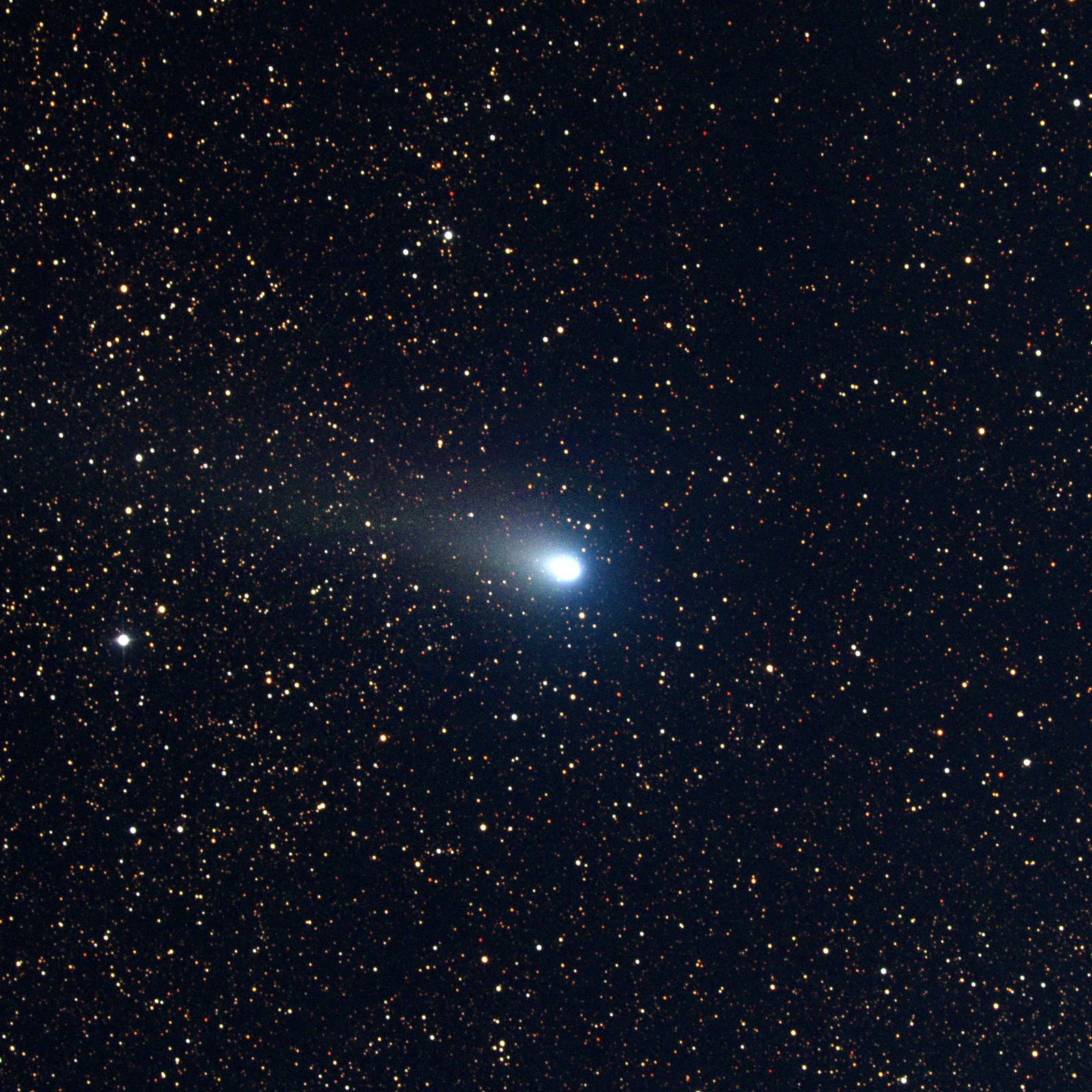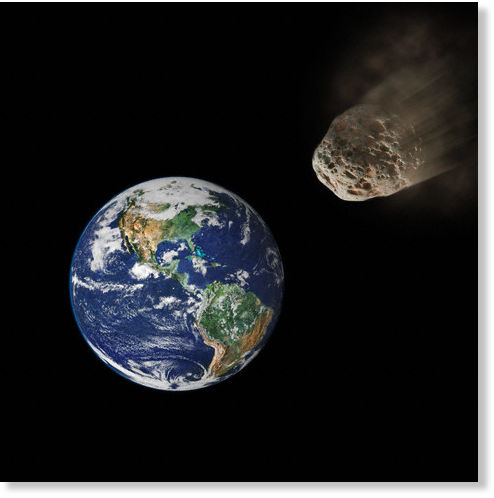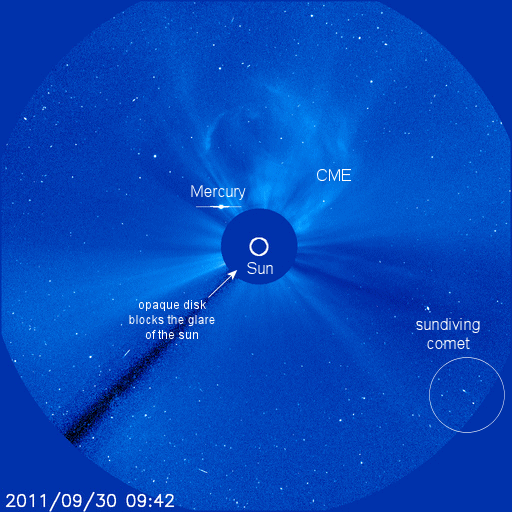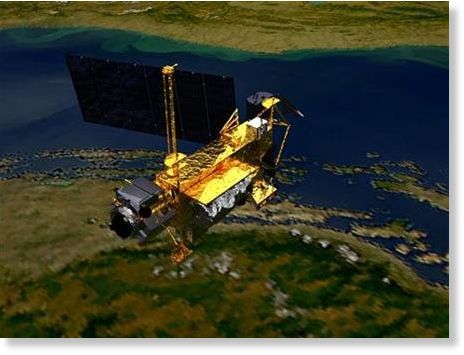On October 8th Earth is going to plow through a stream of dust from Comet 21P/Giacobini-Zinner, and the result could be an outburst of Draconid meteors.
"We're predicting as many as 750 meteors per hour," says Bill Cooke of NASA's Meteoroid Environment Office. "The timing of the shower favors observers in the Middle East, north Africa and parts of Europe."

© N.A.Sharp/NOAO/AURA/NSF Comet Giacobini-Zinner, a fairly frequent visitor to the inner solar system, was captured by the Kitt Peak 0.9-meter telescope on Halloween Night 1998 (UT November 1st, from 02:07 to 03:40). North is up with east to the left. Since the comet was moving across the sky fairly quickly, and since color images are made by combining successive exposures through three different filters, a conventional combination would have either a streaked comet or a set of colored dots for each star. To avoid this, the complete sequence of images, lasting over ninety minutes, was specially processed.
Every 6.6 years Comet Giacobini-Zinner swings through the inner solar system. With each visit, it lays down a narrow filament of dust, over time forming a network of filaments that Earth encounters every year in early October.
"Most years, we pass through gaps between filaments, maybe just grazing one or two as we go by," says Cooke. "Occasionally, though, we hit one nearly head on--and the fireworks begin."
2011 could be such a year. Forecasters at NASA and elsewhere agree that Earth is heading for three or more filaments on October 8th. Multiple encounters should produce a series of variable outbursts beginning around 1600 Universal Time (noon EDT) with the strongest activity between 1900 and 2100 UT (3:00 pm - 5:00 pm EDT).









Comment: Another "Satellite?" Yeah right! More like another meteor!
Check out these links from the last so called "satellite crash".
Video: Aftermath of fireball which destroyed part of Buenos Aires - 1 dead, 8 injured
Argentinian investigators name meteorite victim, rule out gas leak behind Buenos Aires explosion
Witness who photographed Buenos Aires meteor arrested for 'giving false testimony', police force him to change his story
That ain't no satellite! Meteorite impacts Buenos Aires, Argentina